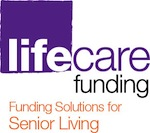In 2014, the U.S. District Court for the Western District of Pennsylvania held that three separate Medicaid Compliant Annuities with "short" term repayments were sham transactions for less than fair market value, as the intentions of these annuities were to shield resources from Medicaid eligibility. The claimants appealed the decision. This month, the United States Circuit Court of Appeals for the Third Circuit issued their decision regarding the claimants’ appeal. The Third Circuit’s decision sets a precedent is important for Elder Law practitioners, not only in Pennsylvania, but potentially in our field at large.
Each case involved Medicaid claimants who purchased annuities after making uncompensated
transfers to qualify for Medicaid benefits. Two of the purchasers were married at the time of purchase and one was not. One case involved an 18-month annuity purchase, while the applicant's life expectancy was 9.5 years. The second appellant purchased a 14-month annuity, with a life expectancy of almost 7 years. The third appellant purchased a 12-month annuity, with a life expectancy of 11.3 years.
The District Court made two holdings in the Zahner case. First, the District Court held that federal law preempted the Pennsylvania rule stating all annuities held by a Medicaid applicant and / or his spouse are not assignable, and thereby countable resources, as the Pennsylvania rule was in direct conflict with federal Medicaid law. The Third Circuit upheld this portion of the District Court decision. Second, the District Court ruled that the purchases of the annuities were sham transactions for less than fair market value. The District Court reasoned that because the annuity terms were not correlated closely enough to the life expectancies of the claimants, they were actuarially unsound. The Third Circuit overturned this portion of the District Court’s decision, opining that an annuity is actuarially sound if its term is less than the annuitant's reasonable life expectancy under the safe harbor provision.
What We Have Learned as Practitioners
By examining in detail the Third Circuit’s Zahner holding, we can get a much better picture of what to look for in annuities moving forward, and how to protect our clients in their purchases of Medicaid Compliant Annuities. It is exciting knowing that short-term annuities are a valid planning tool, in accordance with the Third Circuit’s decision.
The Safe Harbor Provision
The Safe Harbor Provision, 42 US §1396p(C)(1)(F), (G)(ii), states that certain annuities do not disqualify those otherwise eligible from receiving Medicaid benefits. The federal Medicaid law, through the Deficit Reduction Act (DRA), establishes a four-part test for annuities to fall within the Safe Harbor Provision. An annuity must (1) name the State as remainder beneficiary; (2) be irrevocable and non-assignable; (3) be actuarially sound; and (4) provide for payments in equal amounts, during the term of the annuity with no deferral or balloon payments. The Pennsylvania Department of Human Resources (DHS) attacked the annuities on two separate grounds. The first ground was that the annuities were not irrevocable, and the second ground was that the annuities were not actuarially sound. These are the prongs of the Safe Harbor Provision that we will look to in analyzing the Third Circuit’s decision.
Assignability
Pennsylvania Statute Sec. 441.6(b) states that "any provision in any annuity … owned by an
applicant or recipient of medical assistance … that has the effect of limiting the right of such
owner to … assign the right to receive payments thereunder … is void." Pennsylvania DHS argued that this law caused all annuities purchased by Medicaid applicants in Pennsylvania to fail the safe harbor test. The District Court and the Third Circuit held that this is untrue. The Third Circuit opined that all states that wish to participate in the federal Medicaid program must comply with federal eligibility requirements. The Federal Medicaid Act allows states to establish more liberal requirements than the federal rules when implementing the State Medicaid plans, but they cannot provide more restrictive ones. Therefore, citing the Supremacy Clause, the Third Circuit said that the state rule was pre-empted by the federal law and the state must acknowledge the assignability of an annuity in accordance with the intent of Congress. The Third Circuit went on to further express Congress' intent by stating that in married cases any annuity that was payable to the community spouse would count as an income source to the community spouse and could not be a resource for the institutionalized spouses.
Actuarially Sound
The Pennsylvania DHS made two arguments that the annuities were not actuarially sound. First, they argued that the annuities were trust-like in that they were transfers made to a trustee or trustees with the intention that the annuity be held, managed, or administered by the trustee(s) for the benefit of the grantor or certain designated individuals (beneficiaries). Pennsylvania Transmittal 64. The Third Circuit stated strongly that there is no fiduciary relationship between the insurance company and the annuitant like that of a trustee and a beneficiary, as the insurance company has no duty to invest for the benefit of the annuitant, as long as the payments are made on schedule.
Second, the Pennsylvania DHS argued that the annuities were not actuarially sound because the annuity terms were shorter than a "term of years," and the annuitants lost money in each fact pattern presented to the Court. The Third Circuit held that as long as annuity terms are not longer than the reasonable life expectancy of the individual, the transfer is not being made for less than fair market value and the trust remains actuarially sound. The Third Circuit further interpreted "term of years” to be any reasonable time period, and while minutes or days may be a sham period of time, that was not the case here, as the term of months comported with the annuitants’ life expectancies.
National Impact
As Lawyers with Purpose attorneys desiring to use the best planning tools for our clients moving into the future, this ruling is important in many of its findings. The ruling holds that while the state may allow more liberal interpretations of the federal Medicaid rules, it is against the U.S. Congressional intent and in violation of the Supremacy Clause for the state to be more restrictive on Medicaid eligibility than the federal rules allow. The holding further makes a clear distinction between annuities and trusts on the federal level, stating that there is no fiduciary relationship between the annuitant and the insurance company as the insurance company has no obligation to invest in any way in the best interest of the annuitant. The Third Circuit also offers a more clear definition of what a period of time is for purchases of Medicaid Qualified Annuities, allowing purchases for less than a term of years if the time period of payout is in proportion to the annuitant’s life expectancy. In conclusion, the Zahner decision provides solid legal precedent for the continued use of short-term annuities in Medicaid planning.
Please join Dave and me in Phoenix as we discuss the potential implications of the ruling on Medicaid Compliant Annuities in our focus session on Wednesday, October 21st at the Tri-Annual Practice Enhancement Retreat. There are only a few spots left and the doors close TODAY at 5!
Kimberly Brannon, Legal-Technical and Software Trainer at Lawyers With Purpose











